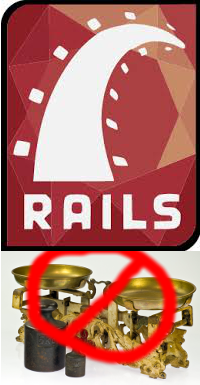Why Do They Say Rails Doesn't Scale?
If you’re new to Ruby on Rails, you may be new to the old debates (pro and con) about how “Rails doesn’t scale.” You might wonder why people say that, or where it came from.

Let’s talk about that.
As far as “Rails Doesn’t Scale”, the main arguments go something like:
1) Ruby is slow, often up to 50x slower than C, so the server will eventually collapse.
This isn’t actually a scaling argument. But it’s true that Ruby is slow. Not 50x any more, closer to 5x (up to maybe 20x), but still, that’s not terribly speedy.
Rails doesn’t help Ruby here. A lot of the metaprogramming techniques it uses are among the slowest things Ruby does. I wrote a book about how Rails uses those techniques called Rebuilding Rails. They’re awesome, but they’re not speedy.
In practice, Ruby and Rails apps often “farm out” the slow stuff. The database is the traditional place to put the heavy lifting, but you’ll see Redis and Cassandra used in similar ways. Want Ruby to be fast? Call to something that isn’t Ruby, and is designed for speed :-)
Pure Ruby is quite slow, but just as scalable as any other language or library. It doesn’t get somehow slower as you add more.
2) Ruby/Rails leaks resources, so large or long-running projects don’t work
There was once more truth to this. Ruby had a few leaks and Rails exercised Ruby like nothing else. Also, ActiveRecord encourages large amounts of garbage per request, which was easy to mistake for leaks.
